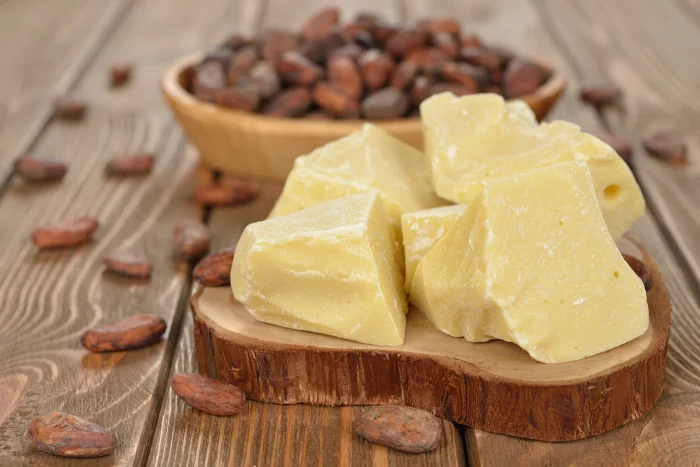Apple cider is a refreshing, flavorful beverage made by pressing apples and extracting their juice. It’s a drink that can be enjoyed year-round but is especially popular in the fall. Whether you like it cold or hot, apple cider is easy to make at home with a few simple ingredients and tools. In this guide, we’ll take you through how to make apple cider from scratch, providing you with a detailed step-by-step process.
What You Need to Make Apple Cider
Before you start making apple cider, gather the following supplies and ingredients:
Ingredients:
Fresh Apples: The main ingredient. You’ll need about 10-12 medium apples for a gallon of cider. A mix of sweet and tart apples works best.
Water: Used to dilute the apple juice slightly during the pressing process.
Sugar (optional): If you prefer sweeter cider, you can add sugar to taste.
Spices (optional for spiced cider): Common spices include cinnamon sticks, cloves, and nutmeg.
Equipment:
Apple Corer and Peeler: To remove seeds and peel the apples.
Knife: For cutting the apples into chunks.
Large Pot or Stockpot: To cook the apples if you want to make cooked cider.
Cider Press or Juicer: This is the most important tool for extracting juice from the apples.
Fine Mesh Strainer or Cheesecloth: To filter out the pulp from the juice.
Bottles or Jars: For storing the finished cider.
Step 1: Select Your Apples
The first step to making delicious apple cider is selecting the right apples. The best apple cider is made with a combination of sweet and tart apples. This gives the cider a well-rounded flavor. Common apple varieties used for cider include:
Sweet Apples: Fuji, Gala, Red Delicious.
Tart Apples: Granny Smith, Jonagold, Winesap, or Braeburn.
A good ratio is about 60-70% sweet apples and 30-40% tart apples. This combination will create a balanced flavor in your cider.
Step 2: Prepare the Apples
Once you’ve selected your apples, it’s time to prepare them for juicing.
Wash the Apples: Rinse them thoroughly under cool water to remove dirt and pesticides. If you’re using organic apples, you may not need to worry about washing them as much, but it’s always a good idea to give them a rinse.
Peel and Core the Apples (Optional): Some people like to peel and core their apples before juicing. While this isn’t necessary, it can help to create a smoother cider with fewer seeds. If you’re using a juicer, it can be helpful to remove the cores since most juicers can’t process seeds easily.
Cut the Apples into Chunks: If you’re using a cider press, you don’t need to worry too much about the size of the pieces. Cutting them into quarters or large chunks will suffice. This allows the press to extract the juice more efficiently.
Step 3: Extract the Juice
Now comes the most important step: extracting the juice from the apples. You can use either a cider press or a juicer to do this.
Using a Cider Press:
Prepare the Cider Press: Set up your cider press and ensure it’s clean and ready to go. Some presses come with a bucket or container to catch the juice, so make sure you have something to collect the liquid.
Load the Apples into the Press: Place your prepared apple chunks into the press. Be sure not to overload the press, as this can prevent it from working properly.
Press the Apples: Slowly begin pressing down on the apples. As the apples are crushed, the juice will begin to flow out. You may need to press several times, emptying the pulp from the press in between, until you’ve extracted as much juice as possible.
Using a Juicer:
Set Up Your Juicer: If you’re using a juicer, place a container or large bowl under the juice spout to catch the juice. Some juicers can be quite messy, so it’s best to work on a surface you can easily clean.
Feed the Apples into the Juicer: Place the prepared apple chunks into the juicer’s chute. Turn the machine on, and feed the apples in slowly. The juicer will extract the juice and separate it from the pulp.
Repeat: Continue juicing until all of your apples have been processed. Be sure to clean the juicer between batches, especially if you’re using a centrifugal juicer, as the pulp can get caught in the machine.
Step 4: Strain the Juice
Once you’ve extracted the juice, you’ll need to strain it to remove any remaining pulp or bits of apple skin. You can use a fine mesh strainer or cheesecloth for this step.
Set Up Your Strainer: Place a fine mesh strainer over a clean bowl or jug.
Pour the Juice Through: Slowly pour the freshly pressed juice through the strainer. This will filter out any solid bits, leaving you with smooth cider.
Dispose of the Pulp: Once all the juice has passed through, you can discard the pulp, or keep it for composting if you prefer.
Step 5: Add Sweeteners and Spices (Optional)
If you prefer your apple cider a little sweeter, you can add sugar, honey, or maple syrup to taste. Start with a small amount and taste as you go until you achieve your desired level of sweetness.
For spiced apple cider, you can add cinnamon sticks, cloves, and a pinch of nutmeg. If you’re making hot apple cider, it’s best to add these spices while you heat the cider later.
If you prefer a more subtle flavor, you can also try adding orange peel, ginger, or allspice. These additional flavors will elevate the cider and give it a unique twist.
Step 6: Heat the Cider (Optional)
While apple cider can be enjoyed cold, many people prefer to drink it warm, especially in colder months. If you want to make hot apple cider, follow these steps:
Transfer the Juice to a Pot: Pour your freshly strained apple juice into a large pot or stockpot.
Heat the Cider: Place the pot on the stove over medium heat. Let the cider simmer for about 10-15 minutes. Stir occasionally to make sure it doesn’t burn.
Add Spices: If you’re making spiced cider, add your cinnamon sticks, cloves, and nutmeg at this point. Stir them in and let them infuse into the cider.
Taste and Adjust: After simmering, taste the cider and adjust the sweetness and spices to your liking. You can add more sugar or spices if necessary.
Serve: Once the cider is hot and flavorful, pour it into mugs and enjoy. For extra flair, garnish with an apple slice or a cinnamon stick.
Step 7: Store Your Apple Cider
If you made a large batch of cider, you may want to store it for later. Apple cider can be stored in the refrigerator for up to a week, so be sure to keep it in an airtight container.
For long-term storage, you can freeze the cider. Simply pour the cider into freezer-safe containers, leaving some space at the top for expansion. When you’re ready to drink it, just thaw it in the fridge or heat it up on the stove.
Tips for Making the Best Apple Cider
Use Fresh, Ripe Apples: The better the apples, the better the cider. Make sure your apples are fresh and ripe for the best flavor.
Don’t Skip the Straining: Straining is important for ensuring a smooth, clean cider without too much pulp.
Try Different Apple Varieties: Experiment with different combinations of apples to find the flavor profile you like best.
Make It Your Own: Don’t be afraid to add your own twist with spices, sweeteners, or other fruits like pears or cranberries.
For Clear Cider: If you prefer clear cider, you can let it sit in the fridge for a few hours to allow the sediment to settle. Then, pour off the clear liquid.
Conclusion
Making apple cider from scratch is an enjoyable and rewarding process that can be done in just a few simple steps. With the right apples, a little patience, and a few optional ingredients, you can create a delicious homemade drink to enjoy year-round. Whether you drink it cold or hot, your homemade cider will be far superior to anything you can buy in a store. So gather your apples, roll up your sleeves, and enjoy the process of making fresh, delicious apple cider!
Related topics:
























